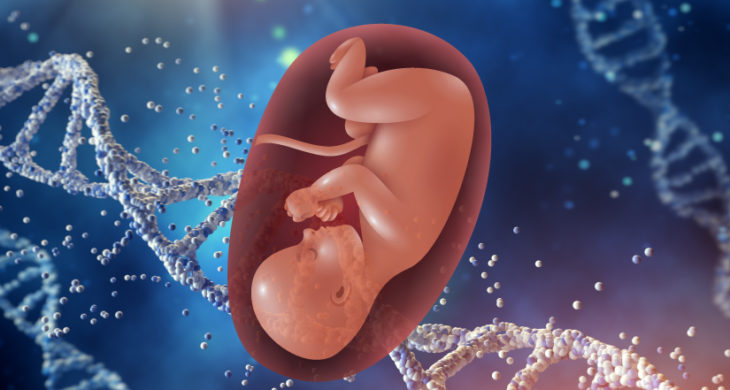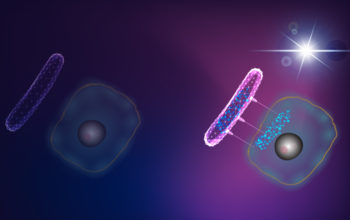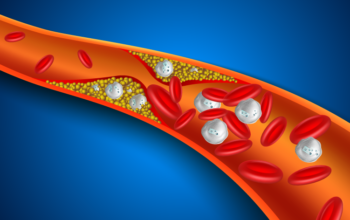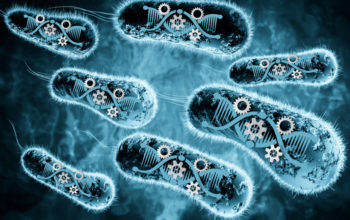
Date: 15th January 2021
Technical advances in DNA sequencing technology and prenatal diagnostics has progressed prenatal identification of many genetic diseases, many of which are amenable to gene therapy or gene editing. However, we currently lack the tools for non viral-mediated delivery of such therapies in utero. Now, scientists have developed ionisable lipid nanoparticles (LNPs) for in utero therapeutic mRNA delivery to mouse foetuses, targeting foetal organs and treating disease before birth.
For many babies with a congenital disease, treatment by protein or enzyme replacement therapy occurs after birth. However, by then the damaging effects of their condition may have already taken place. Therefore, the ability to treat these diseases prior to birth offers many advantages, and as the foetus is small – enabling maximal therapeutic dosing – and the foetal immune system is still immature – minimising the risk of the therapy evoking a response – there is a pressing need to develop novel delivery technologies.
Now, scientists from the University of Pennsylvania and The Children’s Hospital of Philadelphia, US, led by Michael Mitchell and William Peranteau have developed a library of ionisable LNPs for the delivery of therapeutic mRNA into mouse foetuses. They identified formulations that accumulated within foetal livers, lungs, and intestines with high efficiency, and were safely able to induce hepatic production of therapeutic secreted proteins.
Therapeutic protein replacement via mRNA delivery has several potential benefits over delivery of other types of nucleic acids, such as DNA or proteins, as it induces transient protein expression without risk of genome integration, and allows for natural post translational modifications to occur. Whilst, viral delivery of therapeutics is now commonplace, non viral delivery of the mRNA may offer advantages and would further eliminate the risk of viral genetic material integrating into the genome. However, there is a current lack of suitable, non viral, mRNA delivery vehicles that are specifically designed for prenatal use.
LNP platform
The team therefore, started by creating a library of 14 ionisable LNPs which initially encapsulated a reporter mRNA (luciferase). These were then injected into gestational day (E) 16 mouse foetuses, via the vitelline vein – representing a midgestation umbilical vein injection in a human foetus.
Analysis of the pregnant mice following injection revealed strong luciferase signal localised to the foetus for several LNP formulations, but the control foetuses and the mothers showed no reporter signal. Furthermore, many of LNPs outperformed other benchmark lipid and polymeric nucleic acid delivery systems, the best LNP increasing expression 75-fold over commercially available ones.
As the team looked in more depth, they discovered that several of LNPs accumulated in the foetal liver, and in some of those – reporter expression was also seen in the lungs and intestines. A low level of luminescent signal was also noted in the brains of foetuses injected with a few of the LNPs, but the kidneys and hearts remained signal free on treatment with any of them.
LNP therapeutic potential
Whilst the data so far had supported the use of LNPs to efficiently deliver prenatal mRNA, the team wanted to assess the LNPs therapeutic potential. To address this they encapsulated human erythropoietin (EPO) mRNA into the LNPs. This model is relevant to several enzyme deficiency disorders, in which hepatic production of the deficient enzyme would offer a potential therapy.
The team found upon treatment that there was a clear dose-dependent response in EPO production in the foetal liver. EPO levels were high 4 hour post treatment, but by 24 hours this expression was lower. Importantly, survival and toxicity assessments showed that the LNP treatment was safe and that it did not induce foetal loss, and that there was minimal foetal immunotoxicity or liver damage. Additionally, the treatment was safe for the mother, with no induction of liver damage, an inflammatory response, or activation of the complement system.
Conclusions and future applications
The team here have developed and screened LNP platforms for nucleic acid delivery which have the potential to treat congenital diseases prenatally. They found several LNPs that yielded high hepatic delivery and transfection efficiencies, and initial safety assessments were positive for both the mother and foetus.
The team are hoping this LNP technology will open up new avenues for lipid nanoparticles and mRNA therapeutics to treat diseases before birth. The next step will be to deliver disease-specific, therapeutic nucleic acid in human disease animal models, and to assess the LNP as a clinical therapeutic approach.
One area the team will have to address prior to clinical translation is the transient nature of LNP therapy. Whilst, this has its advantages with respect to minimising genome integration for example, it also means that for many diseases multiple in utero treatments may be required as well as postnatal treatments. In the case of a few diseases such as foetal anaemia, prenatal administration may be sufficient.
Nanoparticles are starting to yield exciting and potentially life changing possibilities in their ability to delivery drug cargos to previously untargetable sites. We now have several examples that can cross the blood brain barrier (BBB) and are being investigated as carriers to treat traumatic brain injury with small interfering RNA or a STAT3 inhibitor to treat glioblastoma.
However, the work here represents a big leap forward in addressing the urgent need to treat diseases in utero, giving us the ability to inhibit or ameliorate deleterious effects before they become irreversible. In the main, this type of prenatal treatment has been overlooked, and very little research has been done on assessing the ability of using ionisable LNPs prior to birth. It is hoped that this LNP platform will provide a new method for in utero mRNA delivery for protein replacement and gene editing in the near future.
For more information please see the press release from the Children’s Hospital of Philadelphia
Riley, R. S., M. V. Kashyap, M. M. Billingsley, B. White, M.-G. Alameh, S. K. Bose, P. W. Zoltick, H. Li, R. Zhang, A. Y. Cheng, D. Weissman, W. H. Peranteau and M. J. Mitchell (2021). “Ionizable lipid nanoparticles for in utero mRNA delivery.” Science Advances 7(3): eaba1028.
https://doi.org/10.1126/sciadv.aba1028


